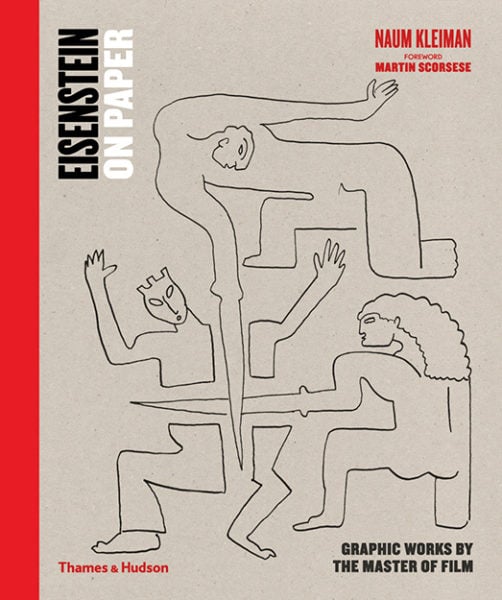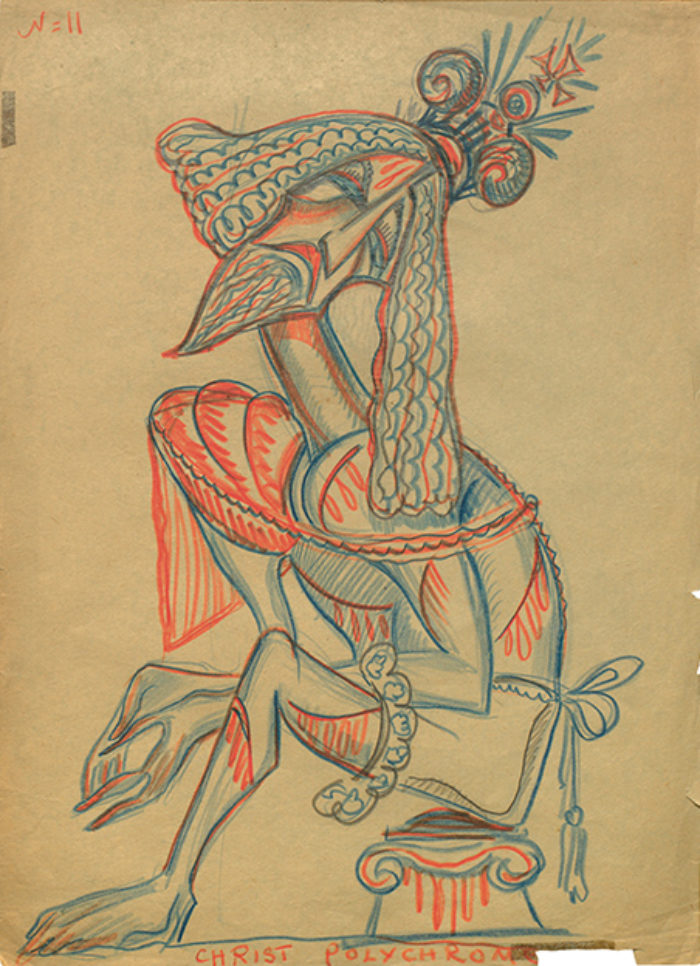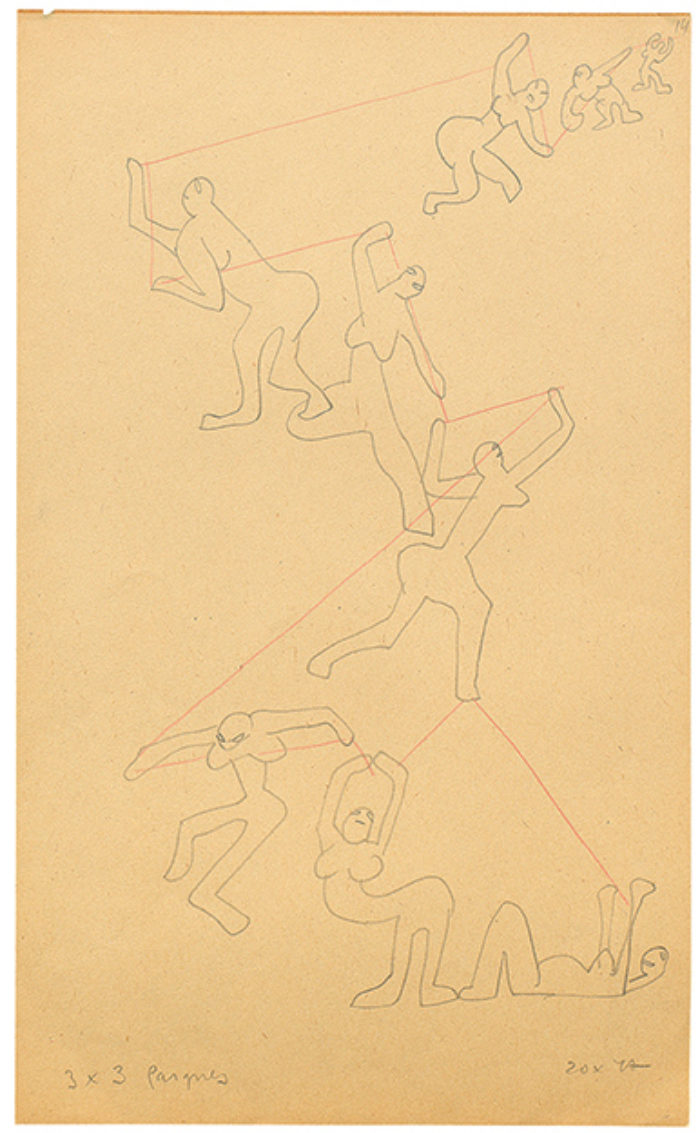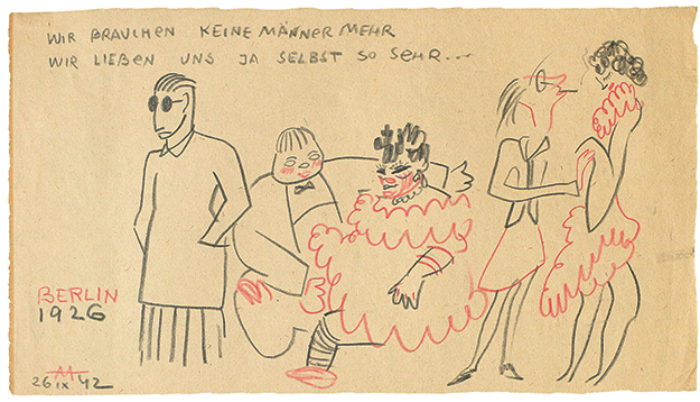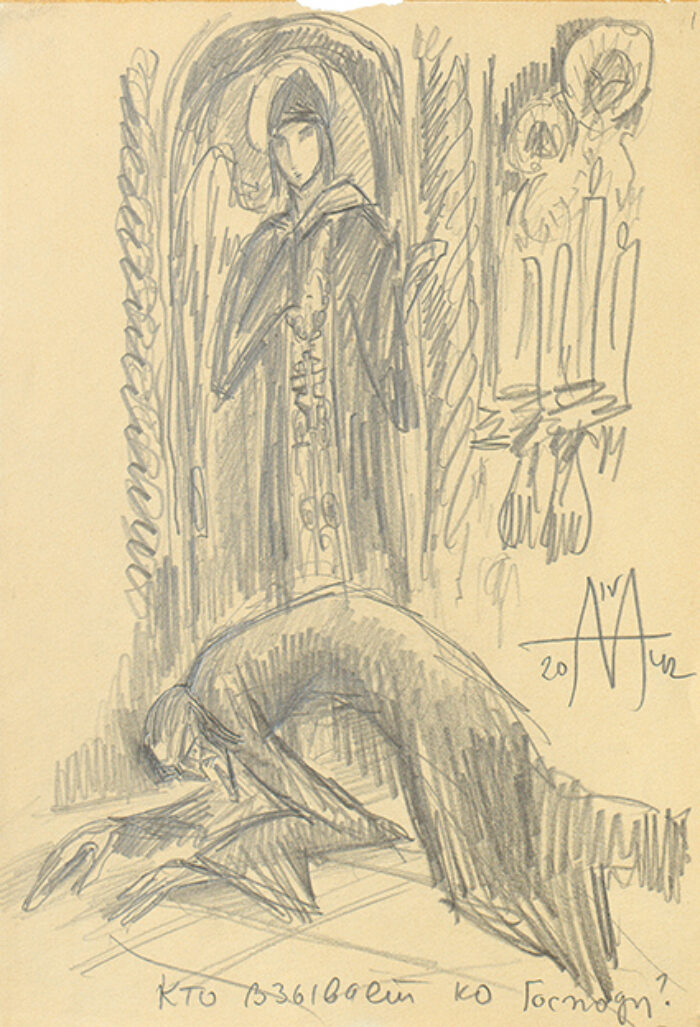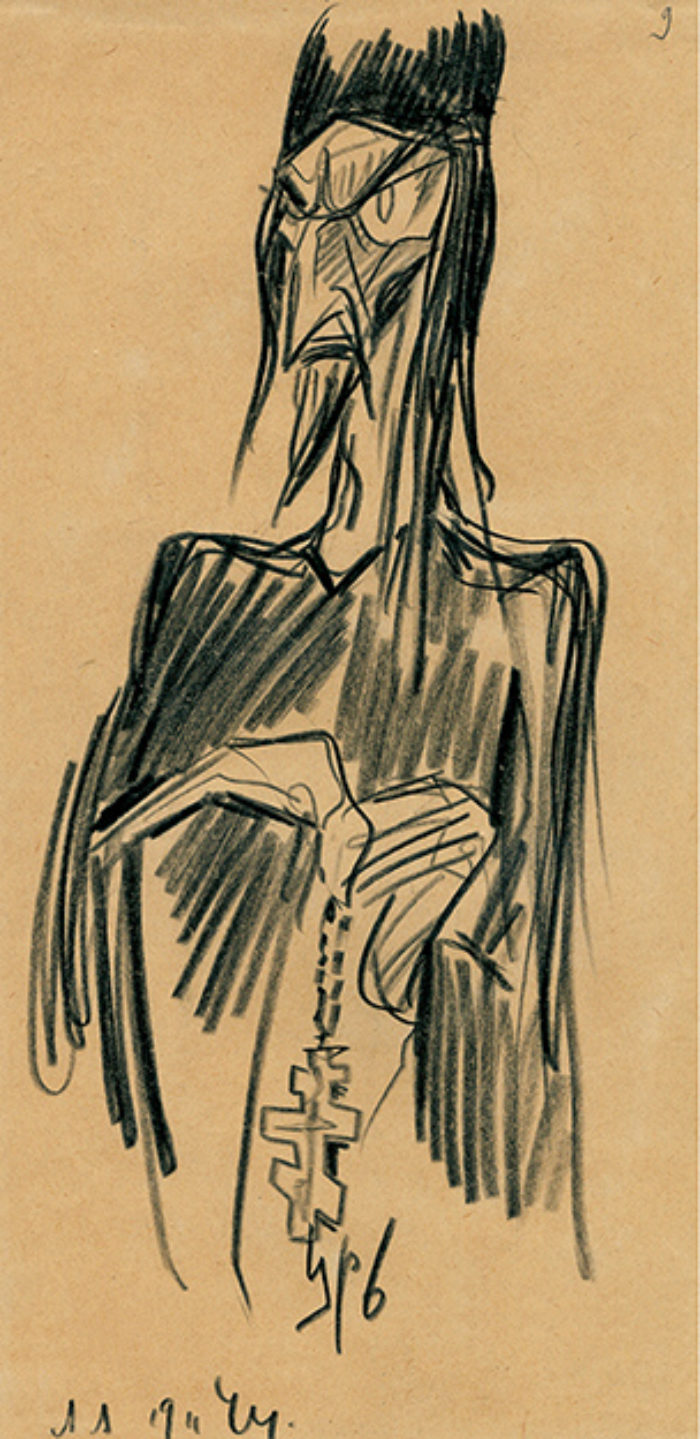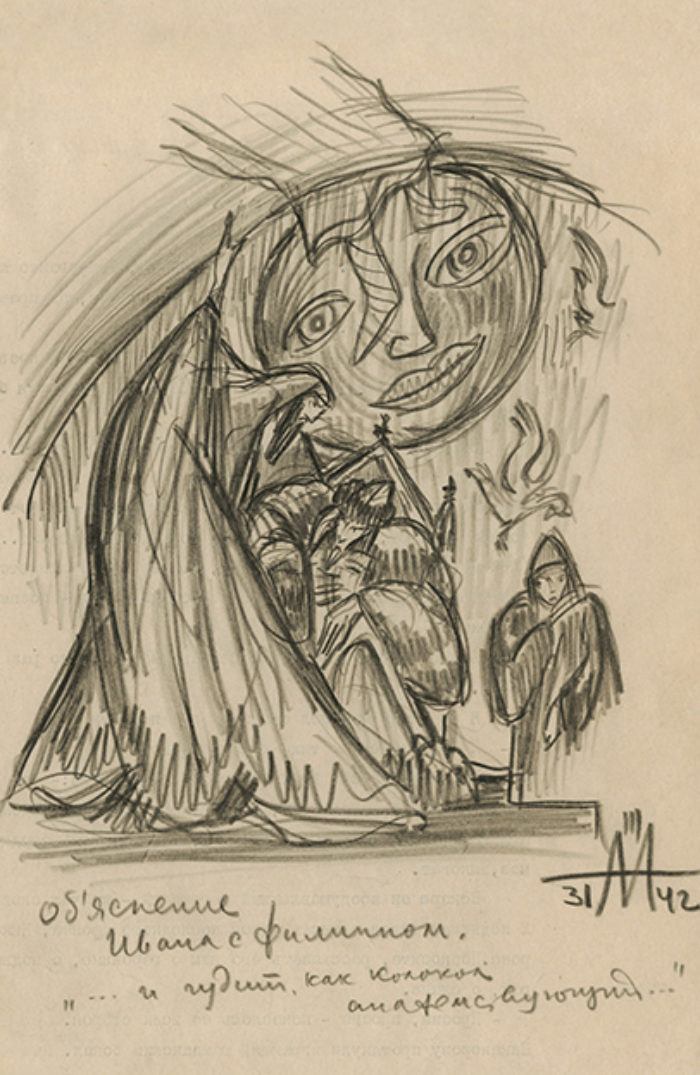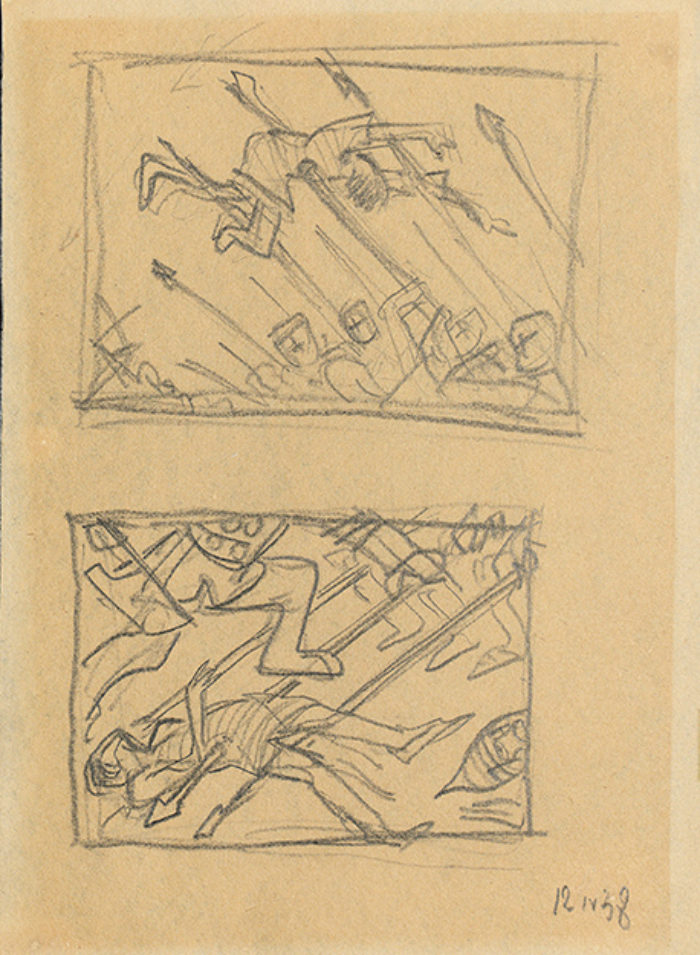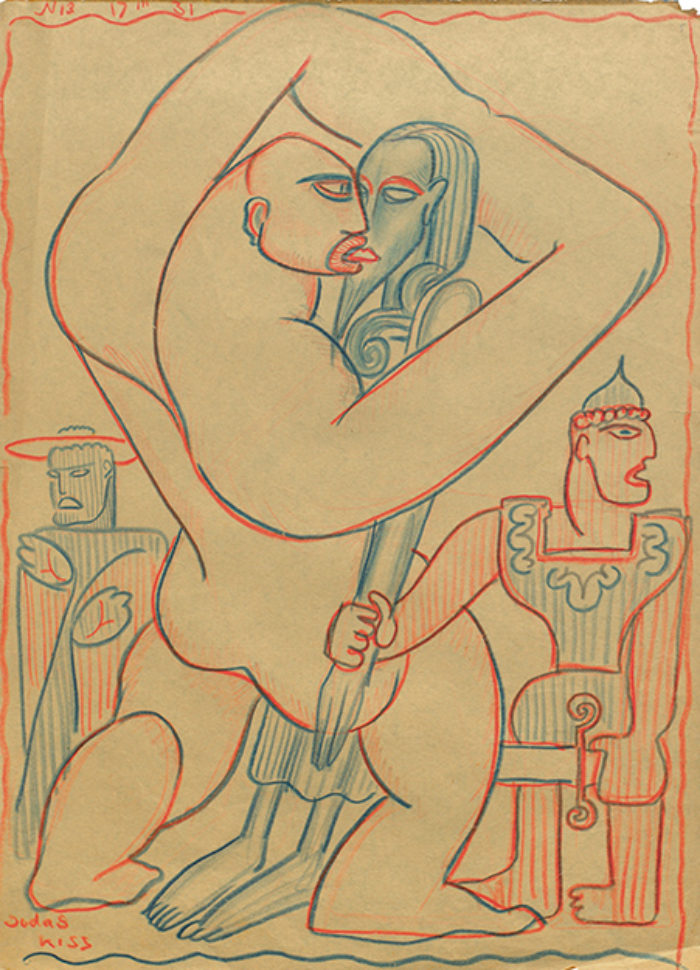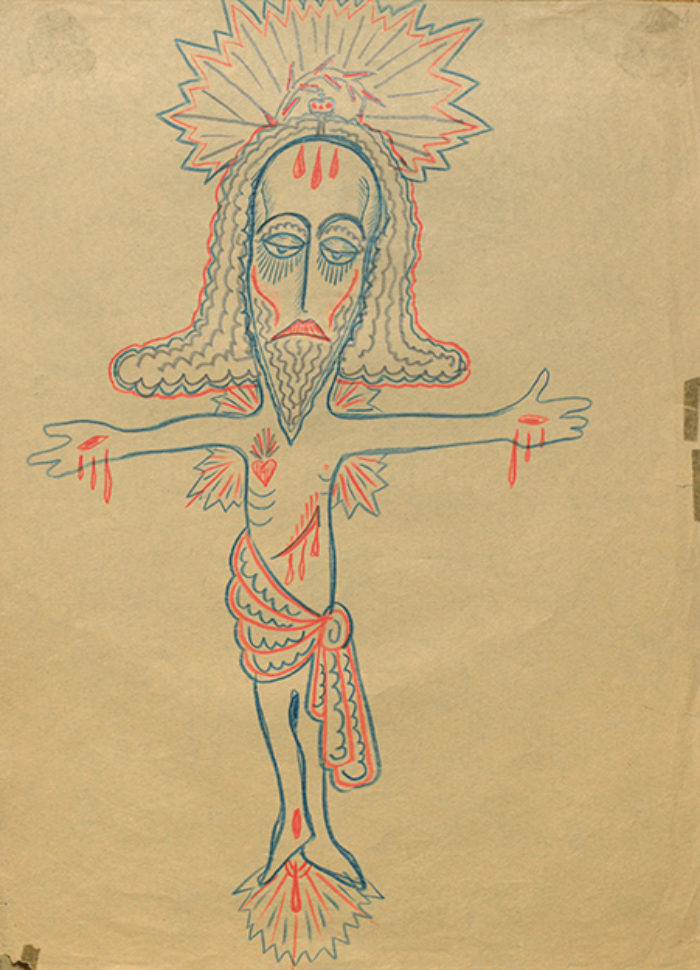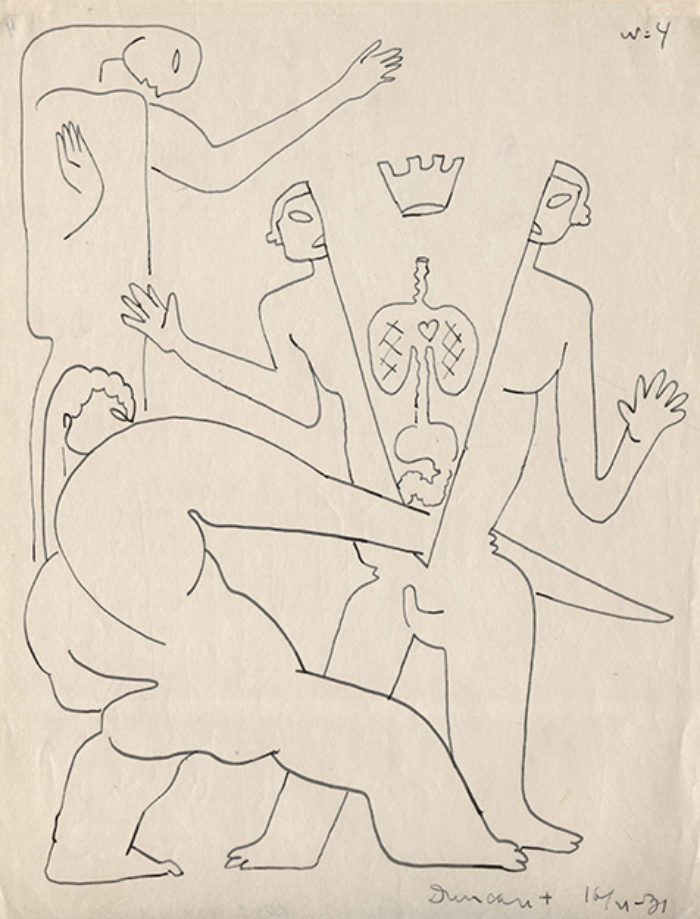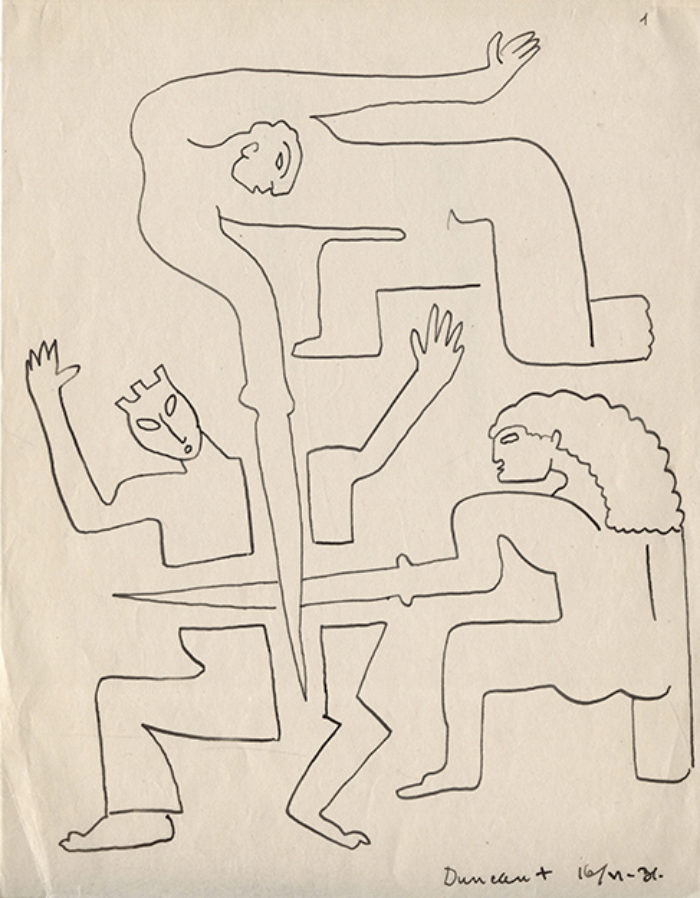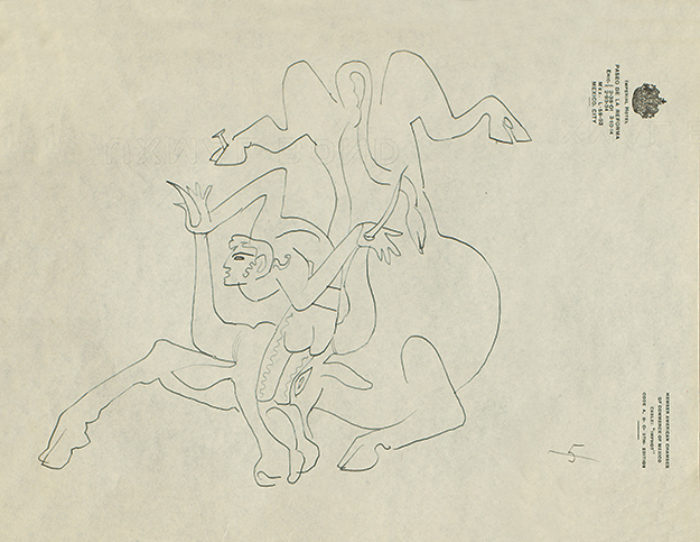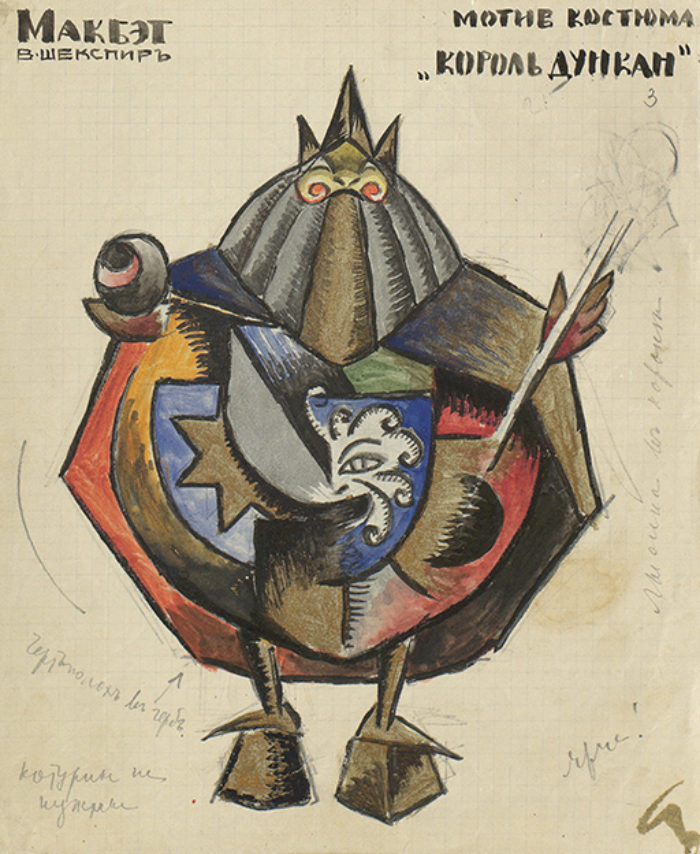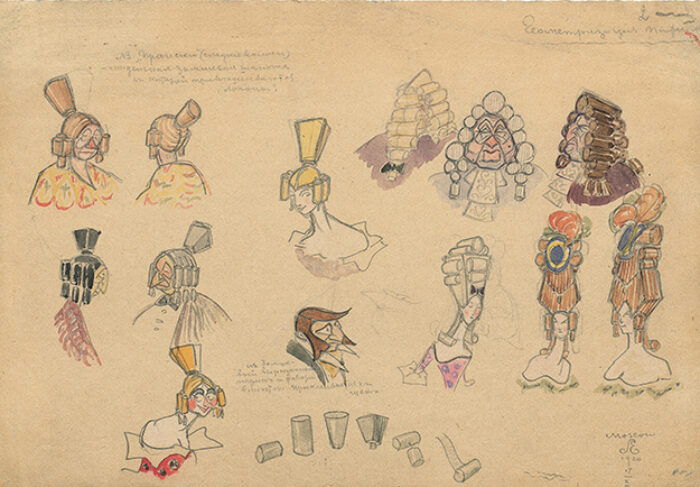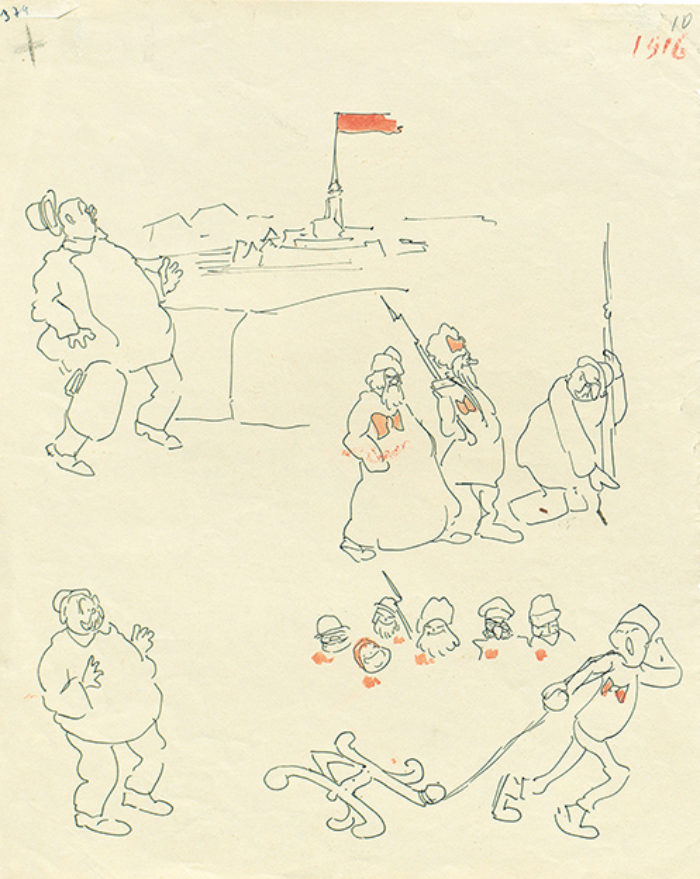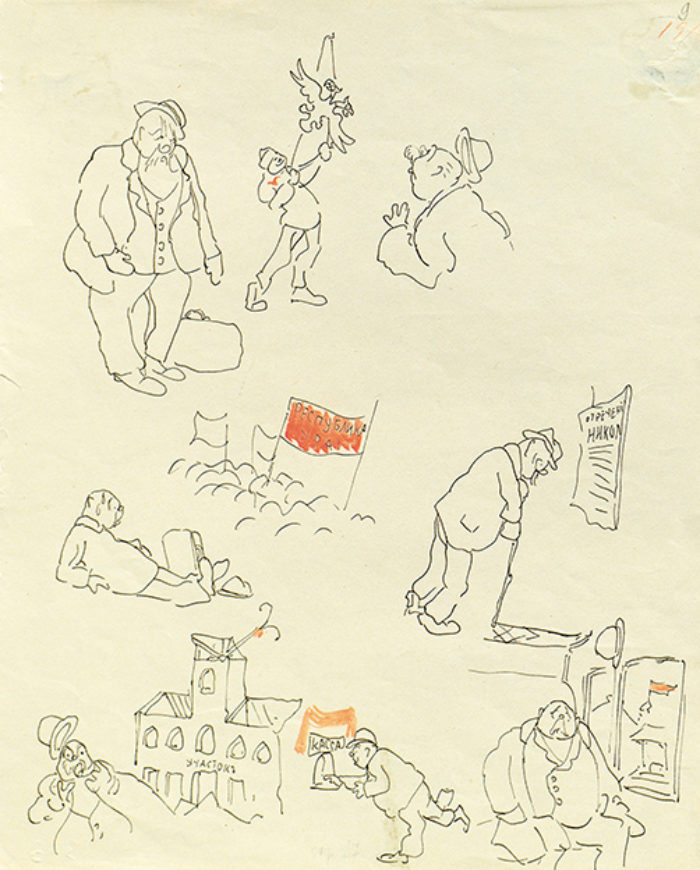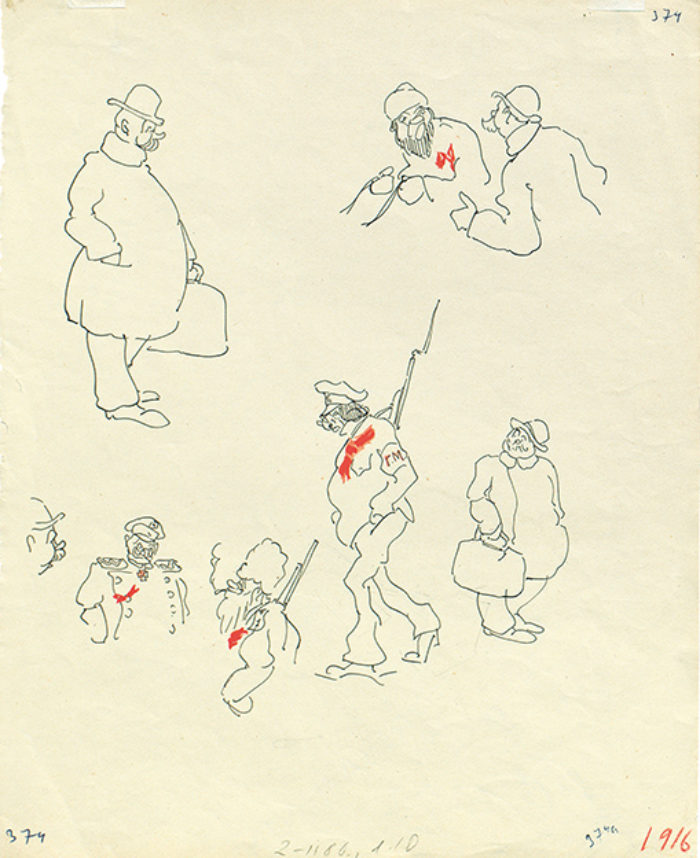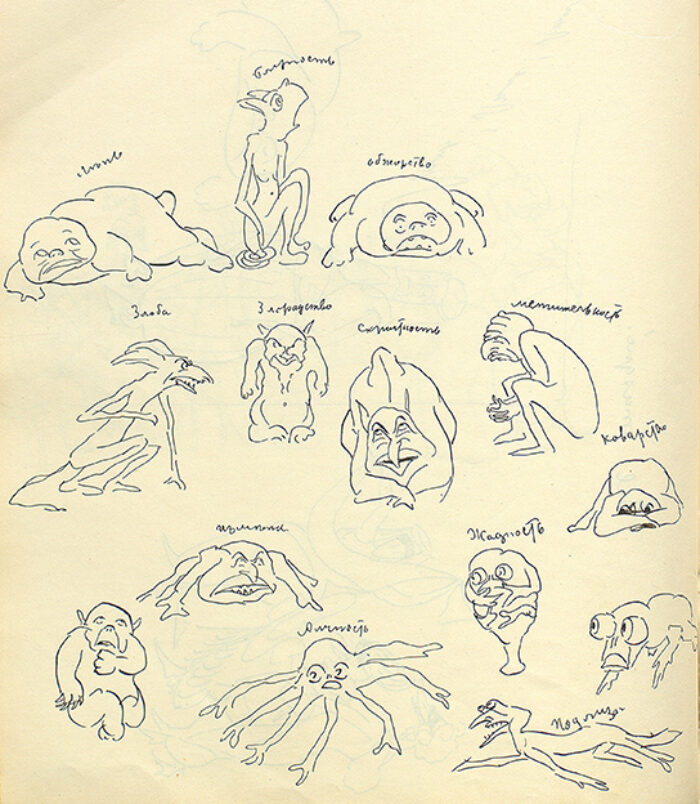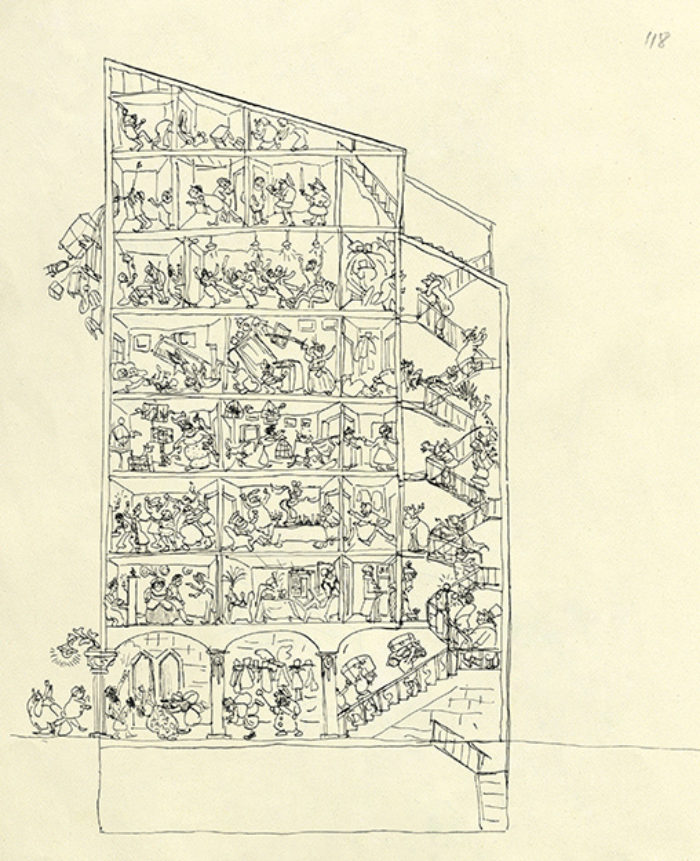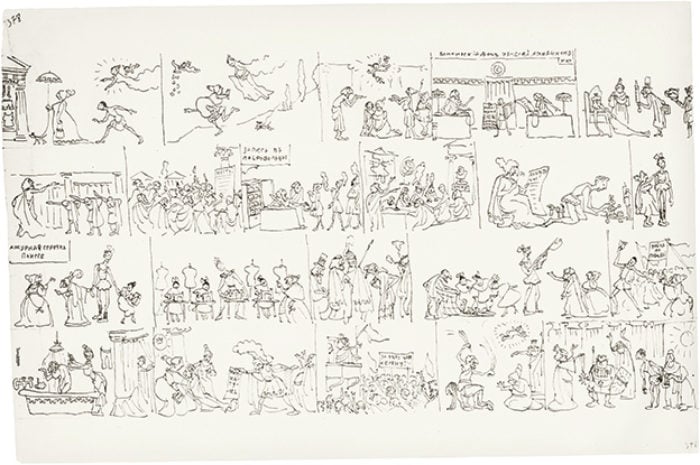The works of major artists in their lesser-known media can provoke a certain dizzying scrutiny. Critics assuredly tackle them, querying their contents. Can they stand apart from the masterpieces? Do they unveil a secret subtext in the major works? Or finally—inevitably—what do they show us of the artist’s inner life? These questions have chewed at understandings of Russian film pioneer and amateur draughtsman Sergei Eisenstein almost since the first exhibition of his drawings in 1932. Naum Kleiman’s Eisenstein on Paper: Graphic Works by the Master of Film hacks its way through them, not always to convincing effect, but provides the most substantial critical collection of his drawings available to date. The number, quality, and careful stylistic evolution of Eisenstein’s drawings suggest the relative significance of the practice to his artistry. Save a quiet period between 1923 and 1931, he drew for his entire life, producing over 6,000 works of startling variety: sketches for films; elaborate stage designs; witty childhood caricatures; mature drawings that could be sexual, violent, carnivalesque, disturbing, or humorous; late-period works of a mythic, esoteric quality; and didactic works meant for students or readers. They’re quickly rendered with minimal, flowing strokes and sweeping, geometric outlines—the most passionate of them conjure an intense organic rhythm with little obvious parallel or precedent. The abstracted, planar lovers in his 1931 “Samson et Dalila” series weave around each other like vines and interlock like bricks, their bodies twisted and distended in grotesque variations on Delilah cutting Samson’s hair. Eisenstein’s later film sketches tend to be more volumetric, with some attention to shading, while still incorporating the expressive potential of his earlier style. In the 1942 sketches of Tsar Ivan for Ivan the Terrible, naturalism is abandoned for angular lines, a hawkish visage, and a distorted bodily structure that recalls El Greco. Eisenstein’s films and writings are by now mostly accessible, but editions of his drawings have not kept pace, even as interest in his graphic works has grown in the last couple of decades. The majority of what’s well-known is confined to drawings from his 1931-1932 trip to Mexico—Eisenstein’s most accomplished period as a draughtsman and often studied for its insights into his sexuality (a facet Kleiman’s volume notably underplays) and philosophy. Eisenstein on Paper spans his output from childhood to death and reproduces around 500 drawings over 300 pages. Although, between exhibition catalogs, books, scholarly works with reproductions, Web images, and Eisenstein’s own writings, I’d wager that around 100 of these drawings have already appeared elsewhere, while others not reproduced here, are available in other sources, it’s the most complete and extensive collection of his drawings readily available. Kleiman tends to underreport competing interpretations and reproductions of the drawings, but with some reason. There are no other monographs that provide sustained discussion and interpretation of Eisenstein’s entire drawing career with high-quality reproductions. His major strength is as a curator and chronicler of Eisenstein’s development, providing extensive theoretical and biographical context to approach the drawings, writing a narrative of Eisenstein’s life that seeks a continuity in the stages of a tortuous career that, as Ian Christie puts it in the introduction, “required the adoption of multiple personae.”
Jesus Polychrome #11 From the cycle Mexican baroque March, 1931 3x3 Parques, 1947 Berlin 1926 From the cycle Memories of travels, 1942 Text: We do not need any more men, we love ourselves and each other so much. Ivan’s confession, 1942 Text: Who calls upon the Lord? Tsar (Ivan in monastic robe), 1944 Ivan’s Repentance Almaty, 1942 Text: The version of the Last Judgement with the Serpent through the flames. Gavrila against the Teutons, 1938 Sketches from the episode The Battle on the Ice Judas Kiss #13 From the cycle Mexican baroque March, 1931 Crucifixion From the cycle Mexican baroque March, 1931 Drawing no. 4 from the cycle Murder of King Duncan, 1931 Drawing no. 1 from the cycle Murder of King Duncan, 1931 Bullfight as crucifixion Drawings from the cycle dedicated to the corrida Mexico City, 1931 Motif for the costume of Duncan in Macbeth Central Educational Theatre Director V. Tikhonovich Moscow, 1921 Geometrization of the Periwig, 1920 Text: NB. Hairstyles (smooth hair)—sparse soft cap, on which hang the curls. Suede cut wig and favori (a lock of loose hair at the temple) are worn together. Hair sticks to the cheek. Revolution in Petrograd, 1917 Revolution in Petrograd, 1917 Revolution in Petrograd, 1917 Sins, 1914 Text: Laziness—Stupidity—Gluttony—Spite—Malevolence—Stealthiness—Vindictiveness—Craftiness—Betrayal—Cupidity—Greed—Servility The house, 1914 The beginning of the Trojan War, 1918 Text: Banking House Menelaus, Agamemnon & Co.—Recording volunteers—Openwork stitching, pleated—War to victory!—Ultimatum—For Faith, Tsar, and Elena!!!—Hector
Christie noted in his 2000 essay “Eisenstein’s Third Text: The Drawings and their Ancestors” that scholarship has a tendency to focus either on Eisenstein’s “working drawings,” sketches for theater or films, merely to clarify his technical M.O., or to read his personal drawings as the “‘symptomatic ’ . . . secret record of Eisenstein’s inner life.” I would add to these Kleiman’s approach, proffering a total theory, interpreting all his drawings, films, and writings as a part of a single, interrelated artistic practice. His preface’s most explicit formulation of this idea is triangular: Eisenstein viewed his films as his “objective” output, the drawings as “subjective,” and, wily dialectician that he was, the aesthetic theory as their mediating third term, “objective science,” thus forming a fluid “equilateral triangle” (or circle) of creation. This Gesamttheorie is enticing, and though Kleiman concedes that the relation between drawing and directing wasn’t uniform throughout Eisenstein’s career, I can’t help but feel it’s a Big Idea troubled by overgeneralization. It rests on assertions made by the artist in the ’30s, a period that saw a furious and substantial reorientation to his thinking. In a 1932 note written for an article on his 1931-1932 drawings, Eisenstein himself refers to the films, drawings, and theory as objective, subjective, and synthetic activities, respectively. But reading this document backwards into his earlier pursuits must be done with caution at the risk of producing muddled effects. It begs the question why, for instance, if Eisenstein’s drawing was so bound to his filmmaking and theorizing, he more or less stopped drawing in the period that saw the production of Strike, The Battleship Potemkin, October, and The General Line, not to mention his montage theory. (As Kleiman notes: “In early 1924 . . . [Eisenstein] would effectively stop drawing.”) Kleiman wonders if his “drawing metamorphized into directing” at that point, but if that’s the case, why were his later film productions so fecund with sketches? Kleiman’s discussions of the films are more fluent when he immerses them in the drawings’ details. Because of its insistence on the centrality of the drawings, Eisenstein on Paper gives the impression that the apogee of Eisenstein’s filmmaking lies not around his silent pictures but the sound films Alexander Nevsky and Ivan the Terrible, which were unusually reliant on his sketches in almost every aspect of their production. Eisenstein used them as strict road maps for not only storyboarding and blocking but also production design, cinematography, and the direction of performances. Chutzpadik though it may be, Kleiman’s chapters on these are superb. Here, he militates Eisenstein’s web of writings and drawings to probe these critically divisive works, revealing an experimentalist whose (often highly personal) graphic works were elements of an effort to further push his favored medium to its limit in search of a genuinely new form. The virtue of Eisenstein on Paper is thus its ability to use the drawings to complicate, rather than answer, questions about this foundational filmmaker. Seen from the vantage point of his graphic works, Eisenstein’s art and, yes, person prove far more mercurial than his received reputation, giving a tantalizing hint at an oeuvre whose depths are still being discovered. Peter Goldberg is a writer living in New York City.
